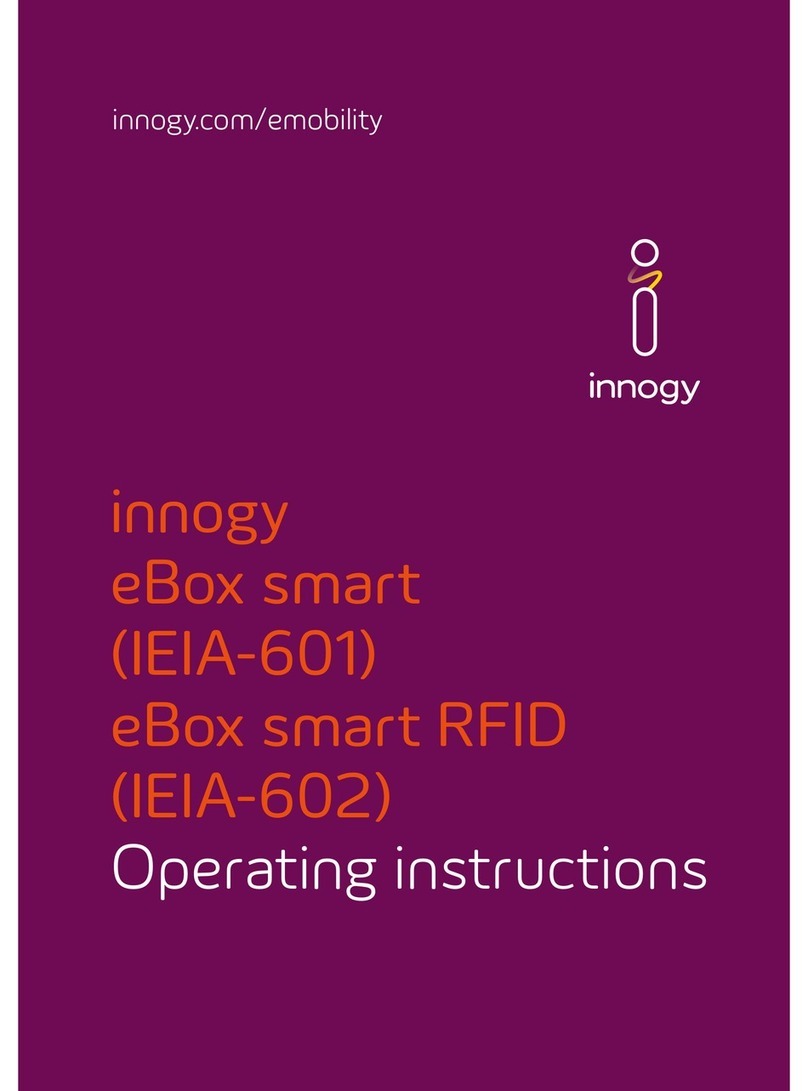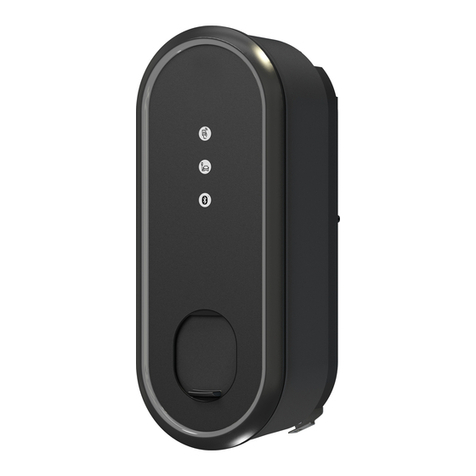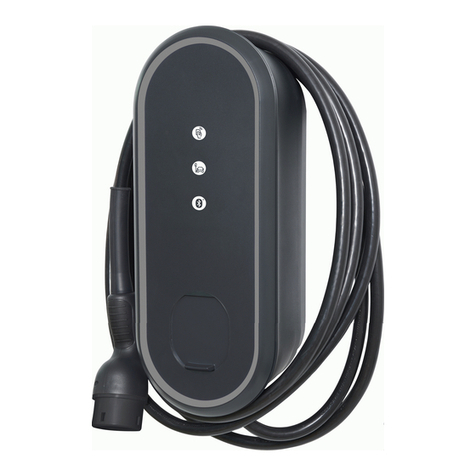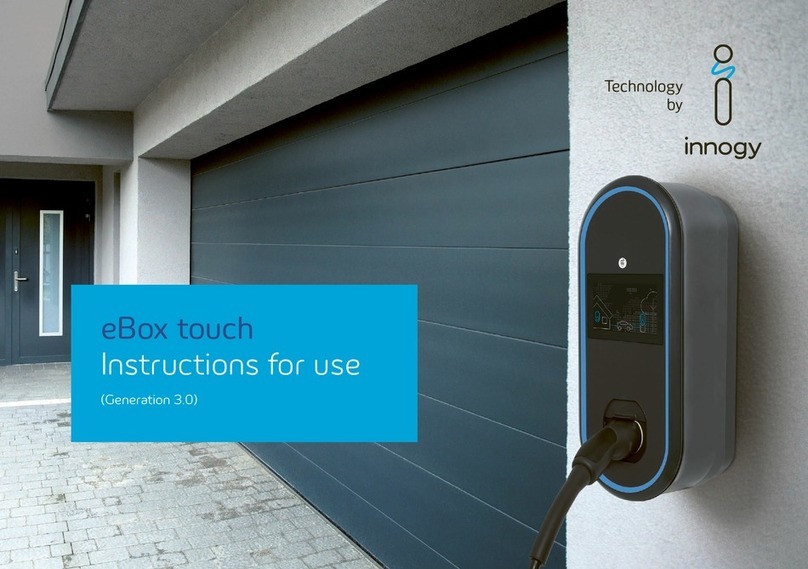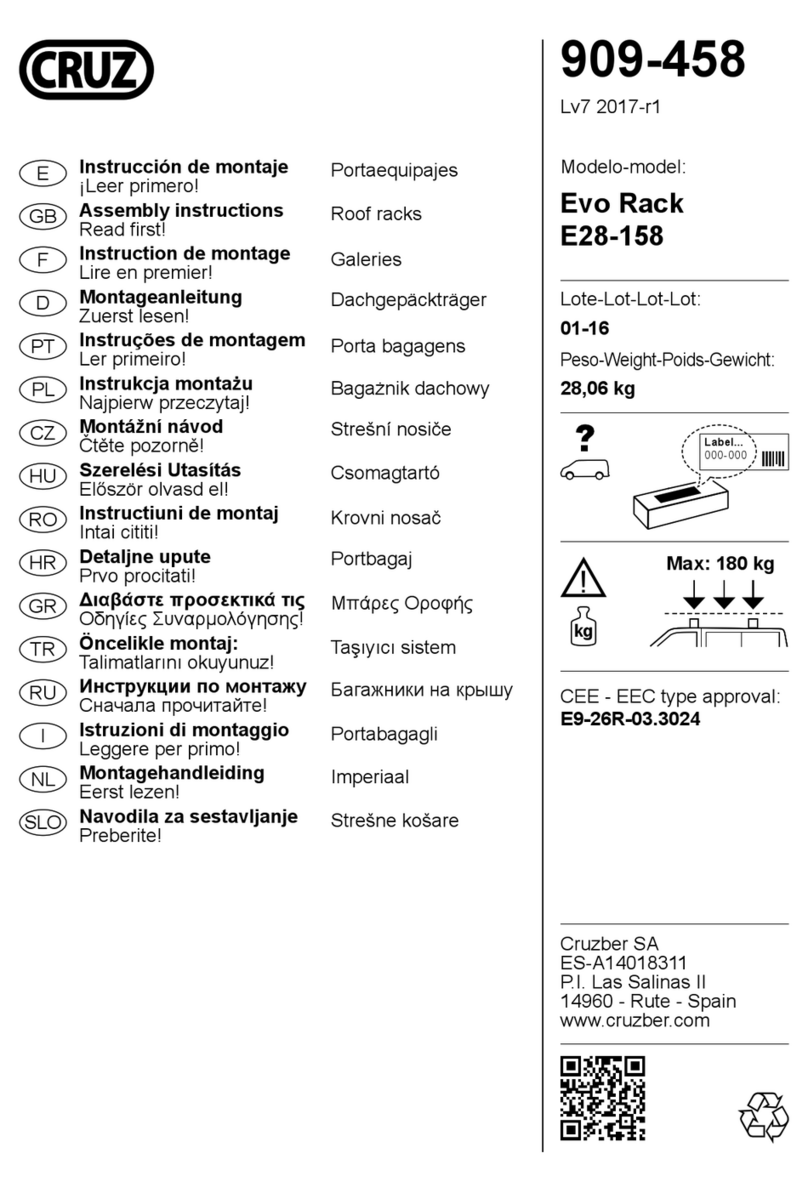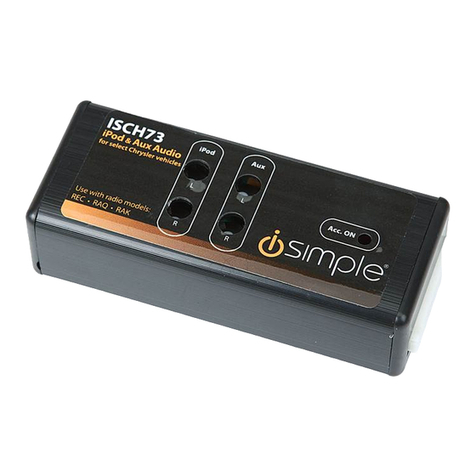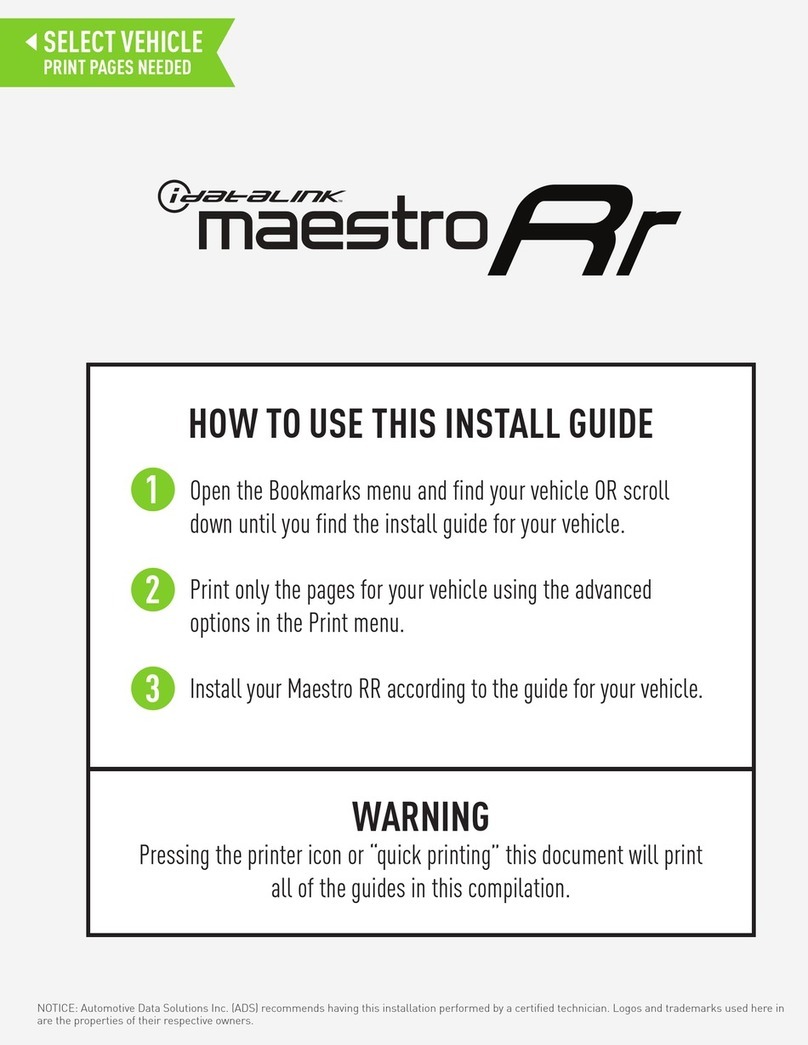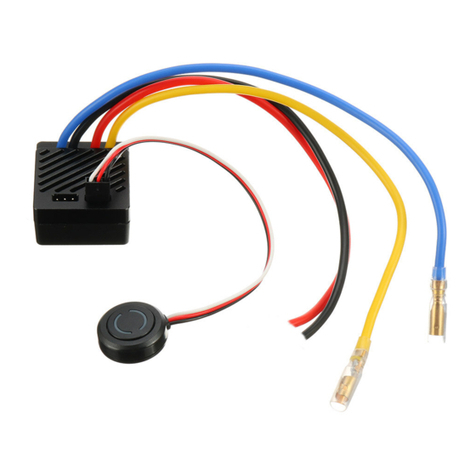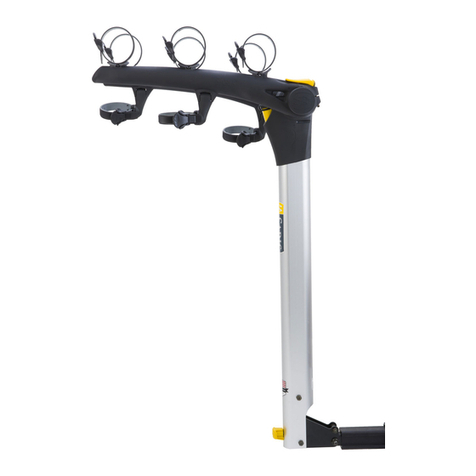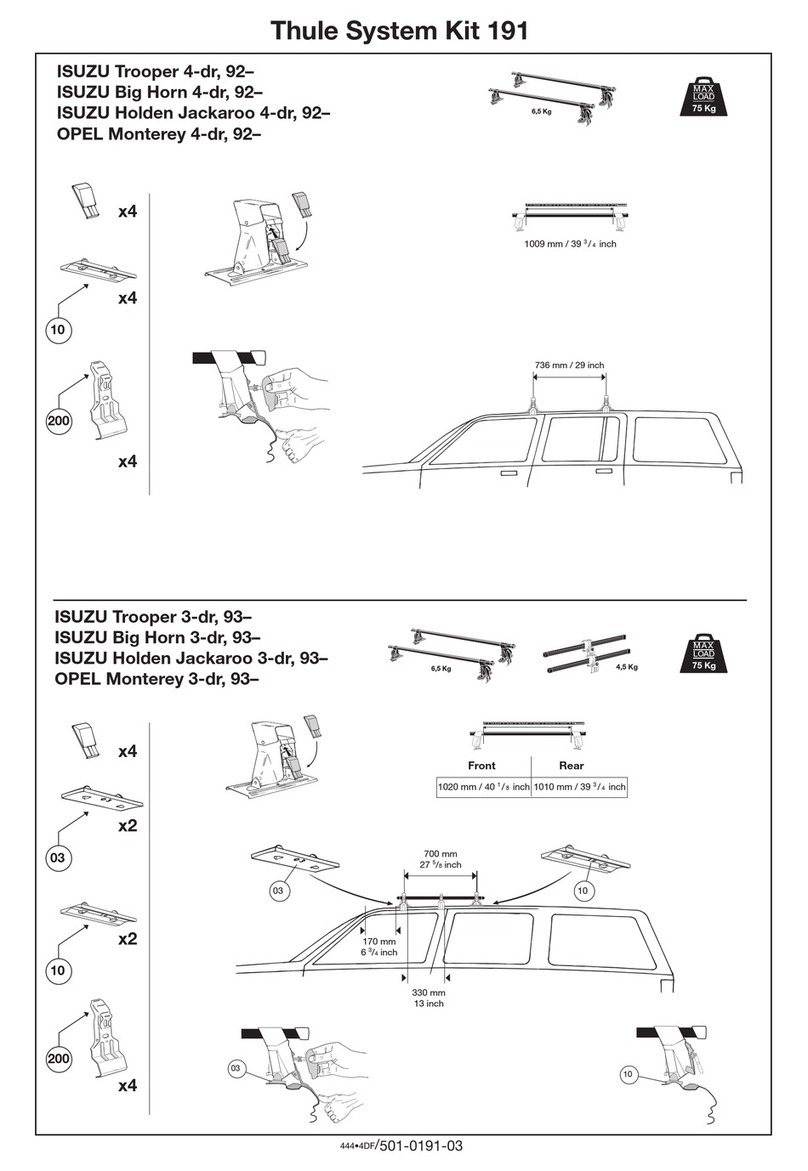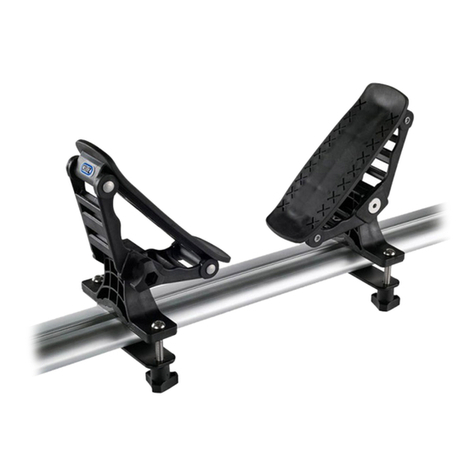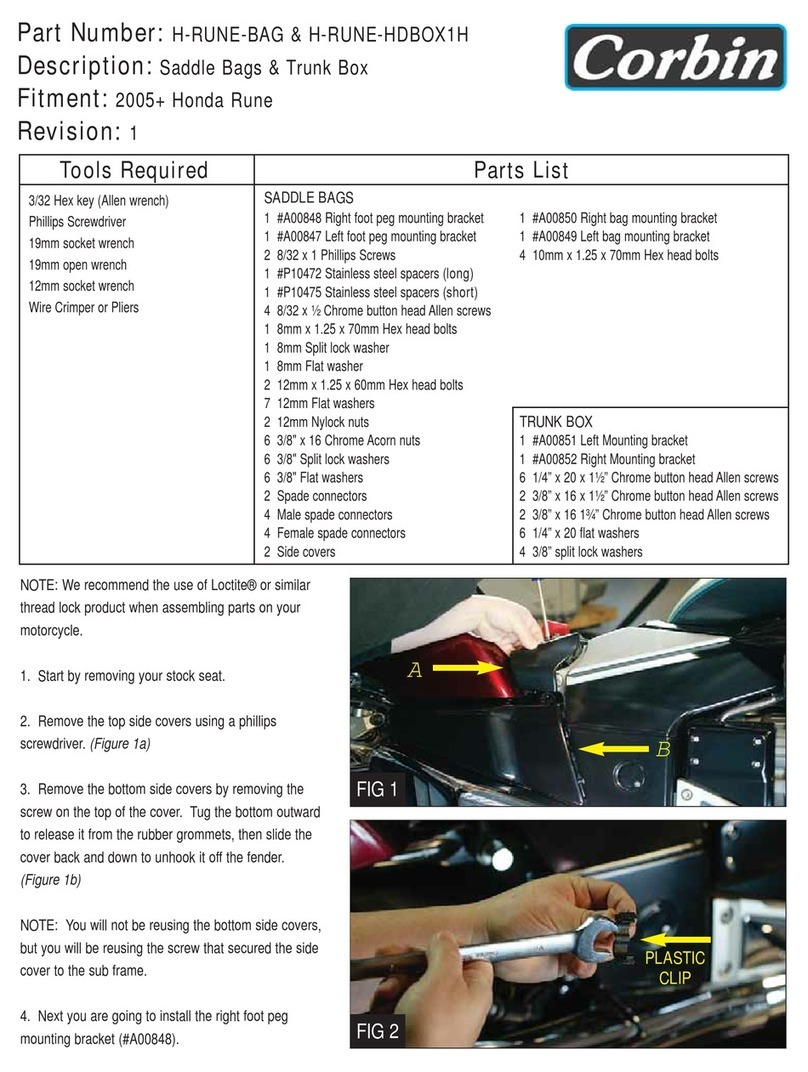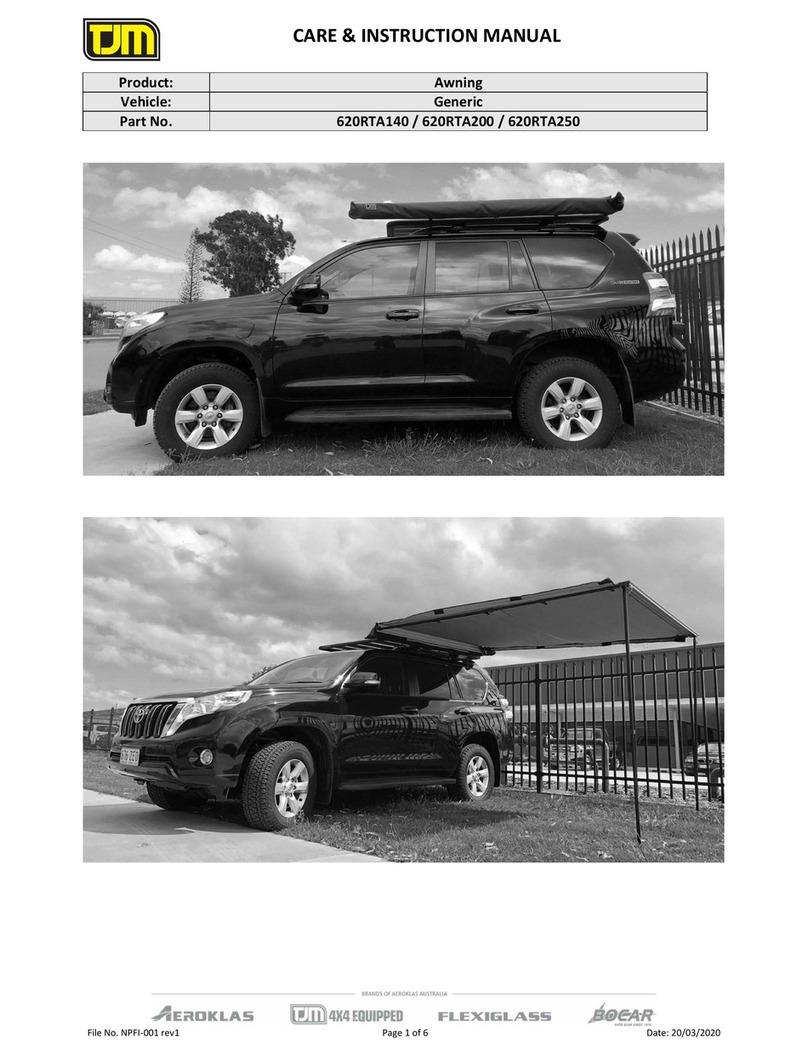Innogy eBox User manual

innogy eBox
(IEIA-277/IEIA-278/
IEIA-279)
Operating
instructions
innogy.com/emobility

innogy eBox (IEIA-277/IEIA-278/IEIA-279)

Operating instructions
Contents
Refuelling is now charging
Basic safety instructions
Scope of delivery
Technical data
Operation for charging an electric vehicle
Inspection/maintenance
Error messages
20.03.2018 • Version 1.0

Refuelling is now charging
Dear Customer,
innogy SE (hereinafter innogy) provides you with a modern and,
simultaneously, future-proof solution for the rapid charging of
electric vehicles.
We are delighted that you have chosen the innogy eBox and hope
you will be happy as you join us on our common journey: designing
the refuelling of the future!
Your eMobility team
innogy SE
innogy eBox (IEIA-277/IEIA-278/IEIA-279)
Very important information
Instructions which particularly relate to safety
!
i

Basic safety instructions
This manual contains information on the correct operation of the
innogy eBox. The charging box should be operated and handled ac-
cording to these operating instructions. The installation instructions
contain detailed information on the installation of the product. Fail-
ure to comply with these can compromise its function and safety.
Warranty
The following instructions must be heeded for a
warranty in terms of function and safety:
innogy bears no liability for damage resulting
from non-observance of the instructions.
Warranty and liability conditions of the terms
of sale and delivery or any innogy cooperation
agreements are not extended by the following
instructions.
The product may only be operated after notice
is taken of the corresponding operating instruc-
tions.
The product may only be operated by qualified
skilled personnel who are familiar with the legal
requirements.
The product may only be used for its intended
purpose.
Repair work may only be undertaken by skilled
personnel or appropriately instructed persons.
Additional training is mandatory.
The product may not be converted or modified.
The manufacturer will not bear any liability for
unilateral modifications to the product.
Only suitable accessories may be used with the
product.
Only spare parts listed by innogy in the spare
parts catalogue and, consequently, approved
may be used for repairs.
We reserve the right to make technical changes
in the context of further development. In add-
ition to the instructions in this manual, generally
applicable safety and accident regulations must
be observed!
Usage
These operating instructions relate to the innogy
eBox and are valid for use of the innogy eBox
within Germany.
Intended use
The device is intended for professional use out-
doors. Instructions for charging are applied to
the innogy eBox above the charging plug. The
operator pledges to maintain this manual in a
permanently legible condition. Knowledge of
these operating instructions is obligatory for
operation of the charging box.
The device is designed exclusively for charging
electric vehicles with a type 2 plug pursuant to
IEC 62196-2 and charging current control via
the pilot signal pursuant to IEC 61851-1. Use for
supplying other devices is not permitted.
General safety instructions
The innogy charging box is EMC tested and
meets the requirements of EMC Directive
2014/30/EU and the Low Voltage Directive
Operating instructions
i
i
!

Scope of delivery
The scope of delivery of the innogy
eBox and accessories is described
below.
Components included
in scope of delivery:
• innogy eBox: Charging box for charg-
ing electric vehicles according to the
following technical data
• Two keys inside the box
• Drilling template
• Operating instructions
• Installation instructions
innogy eBox (IEIA-277/IEIA-278/IEIA-279)
2014/35/EU. Instructions in manuals for (mo-
bile/wireless) communication devices must be
observed when using in the vicinity of (mobile/
wireless) communication devices.
The innogy eBox charging socket is disconnect-
ed from the power supply network after every
charging to ensure voltage-free plugging (and
unplugging) of the charging cable at all times.
The electric vehicle is connected with the innogy
eBox via a charging cable for charging. As the
operator of the charging box, you may have to
inform the user in an appropriate manner about
the correct use of charging cables. innogy bears
no liability for any damage occurring due to the
improper use of charging cables.
Troubleshooting
The rectifying of faults must be undertaken by
an electrical engineering specialist.

Technical data
Operating instructions
Geometry
Dimensions:
Installation:
Weight:
(H x W x D) 660 x 240 x 150 mm
Wall mounting
innogy eBox: approx. 5 kg
Protection class IP54
Temperature range − 25 °C to +40 °C
Grid connection
Power supply:
Required connected load:
400 V 3~ + PE+N from sub-distribution
• 11 kW; maximum power
• Single-phase connection also possible (3.7 kW)
Charging points
No. of charging points:
Output:
Socket:
Single charging point
11 kW (400 V 3~, 16 A)
Type 2 socket (3~ + N + Pe + pilot + proximity)
pursuant to IEC 62196-2 with plug lock
Display Multicoloured LED indicates charging,
charge status and error message
Protection technology Residual current device Type B (30 mA for AC residual
currents and 6 mA for DC residual currents) and circuit breaker
separate in sub-distribution (not included in scope of delivery)
Authentication/
activation
Via key switch
Communication Pilot signal pursuant to IEC 61851-1:2012
Foil wrapping Weather and graffiti-resistant foil
(optionally available)
Access authorisation
(installer)
Special screws, special tools required
Additional
convenience functions
The functional design of the casing allows the charging cable to be
hung over the charging box following completion of charging
!

Operation for charging
an electric vehicle
Prerequisite for charging with the innogy eBox is the activation of
a vehicle on the innogy eBox. The user of the innogy eBox can avail
of the operating modes described below.
Operating modes
innogy eBox (IEIA-277/IEIA-278/IEIA-279)
Ladevorgang beenden
Aus
Ein
1. Off
Ladevorgang beenden
Aus
Ein
2. Permanently on
Ladevorgang beenden
Aus
Ein
3. Operational for the
next 60 seconds
1
2
60 sec.
Ladevorgang beenden
Aus
Ein
4. Deactivation
A
us
Ladevor
g
an
g
beende
n
On On
On
On
Off Off
Off
Off
Charging complete Charging complete
Charging complete
Charging complete
1
2
i

Operating instructions
The operating mode is indicated by
the LED above the key switch.
The following modes are indicated:
“Off”
LED display is off
Charging box operational
LED indicator illuminates white
Vehicle connected
LED indicator illuminates green
Charging active
LED indicator illuminates blue
Charging impossible
LED indicator illuminates red
Charging box faulty
LED indicator flashes red
Risks for humans and the environment
• Stumbling injury due to improper laying
of cables.
• There is a danger of electric shock where
defective cables are involved.
• There is a risk from road traffic when installing
and removing the cable in areas where there is
heavy traffic.
Protective measures and rules of conduct
• The charging cable should be routed so that
no risk of stumbling occurs due to the installa-
tion.
• When plugging in the charging cable, ensure
that only charging cables are used that are
visibly and technically sound and intended for
charging.
• Pay particular attention to road traffic on busy
roads.
• Do not attempt to repair defective cables.
Conduct in the event of malfunctions
• Have defective charging boxes repaired imme-
diately by appropriate skilled personnel.
• Do not establish an electrical connection if
charging cables or charging points are de-
fective.
Maintenance or replacement of charging
cables
• Defective cables must be repaired or replaced
by a qualified person.
• Defective cables must not be used
any further on the eBox.
Conduct in case of accidents, first aid
• Switch off the power.
• Provide first aid and secure the danger
zone. Emergency no.: 112
• Make an emergency call and initiate rescue. !
Using the charging cable
The following information is provided for the
safe laying of cables for the charging of electric
vehicles on the innogy eBox. The user of the
eBox is responsible for the safe handling of
charging cables.
!
!
!
!

Inspection/maintenance
innogy eBox (IEIA-277/IEIA-278/IEIA-279)
Inspection/maintenance
The eBox is maintenance-free. It is recommend-
ed that an electrician conduct a cyclic inspection
of the pre-installation and eBox to the degree
stipulated in DIN VDE 0702. An inspection of
the pre-installation in accordance with legal and
normative requirements, in particular regulatory
examination of the function of the residual
current device (RCD), is necessary in this case.
For inspection/maintenance, innogy recom-
mends the following in addition to legal and
normative specifications:
• Interior/exterior cleaning
• Functional inspection of mechanical
components (charging socket, plug lock and
cover lock)
• Visual inspection of cable connections
• Checking of functionality of LEDs
• Functional inspection of charging
i

Error messages
Operating instructions
LED flashes red 2 x per second:
The charging plug lock is faulty.
• Please check the charging plug (e.g. for dirt).
• Please deactivate and reactivate the charging
box completely once.
LED flashes red continuously:
The supply voltage for charging is inadequate
(or drops too dramatically due to the electrical
load during charging).
• More current is charged from the electric
vehicle than can be safely provided via the
installation. Please contact your installation
partner.
• The power supply is overloaded by too many
simultaneous consumers.
LED flashes slowly white 2 x per second:
A charging cable with an invalid current value is
connected.
• Please replace the charging cable with a certi-
fied charging cable suitable for your vehicle.
LED flashes rapidly white 5 x per second:
• The charging cable is defective.
• Please replace the charging cable with a certi-
fied charging cable suitable for your vehicle.
LED flashes rapidly green 5 x per second:
The vehicle signals invalid current values.
• Please disconnect the vehicle from the charg-
ing cable and start the complete charging
procedure from the beginning. Please contact
the manufacturer of your vehicle if the fault
persists.
LED remains permanently white:
Your vehicle is not recognised or the charging
cable is defective.
• Please replace the charging cable with a certi-
fied charging cable suitable for your vehicle.
• Please disconnect the vehicle from the charg-
ing cable and start the complete charging
procedure from the beginning. Please contact
the manufacturer of your vehicle if the fault
persists.
LED flashes slowly green 2 x per second:
The vehicle signals an invalid status.
• Please disconnect the vehicle from the charg-
ing cable and start the complete charging
procedure from the beginning. Please contact
the manufacturer of your vehicle if the fault
persists.

innogy SE
Flamingoweg 1
44139 Dortmund
Germany
emobility@innogy.com
innogy.com/emobility
eMob-14/01.18
This manual suits for next models
3
Table of contents
Other Innogy Automobile Accessories manuals
Popular Automobile Accessories manuals by other brands
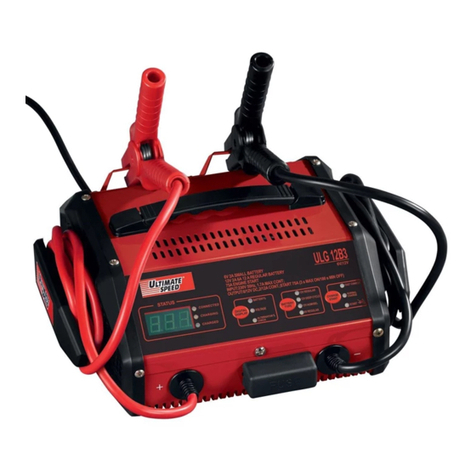
ULTIMATE SPEED
ULTIMATE SPEED ULG 12 B3 Original instructions
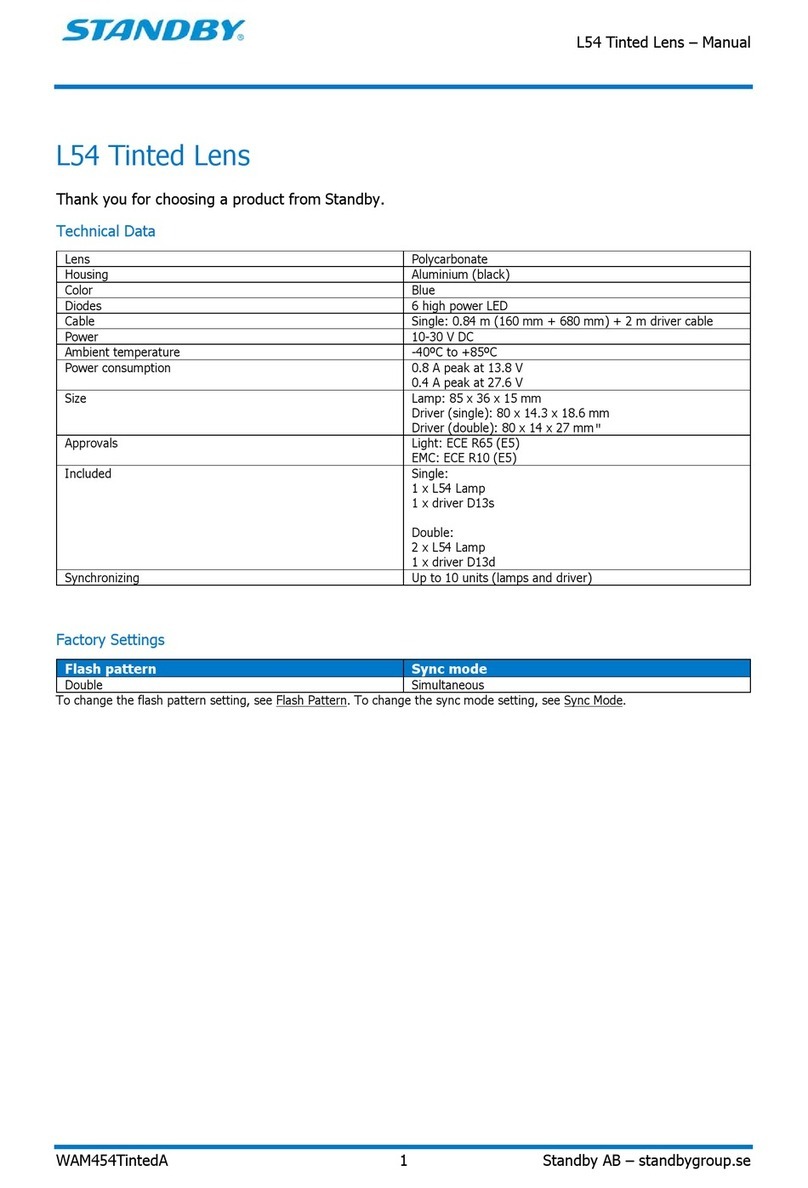
Standby
Standby L54 manual
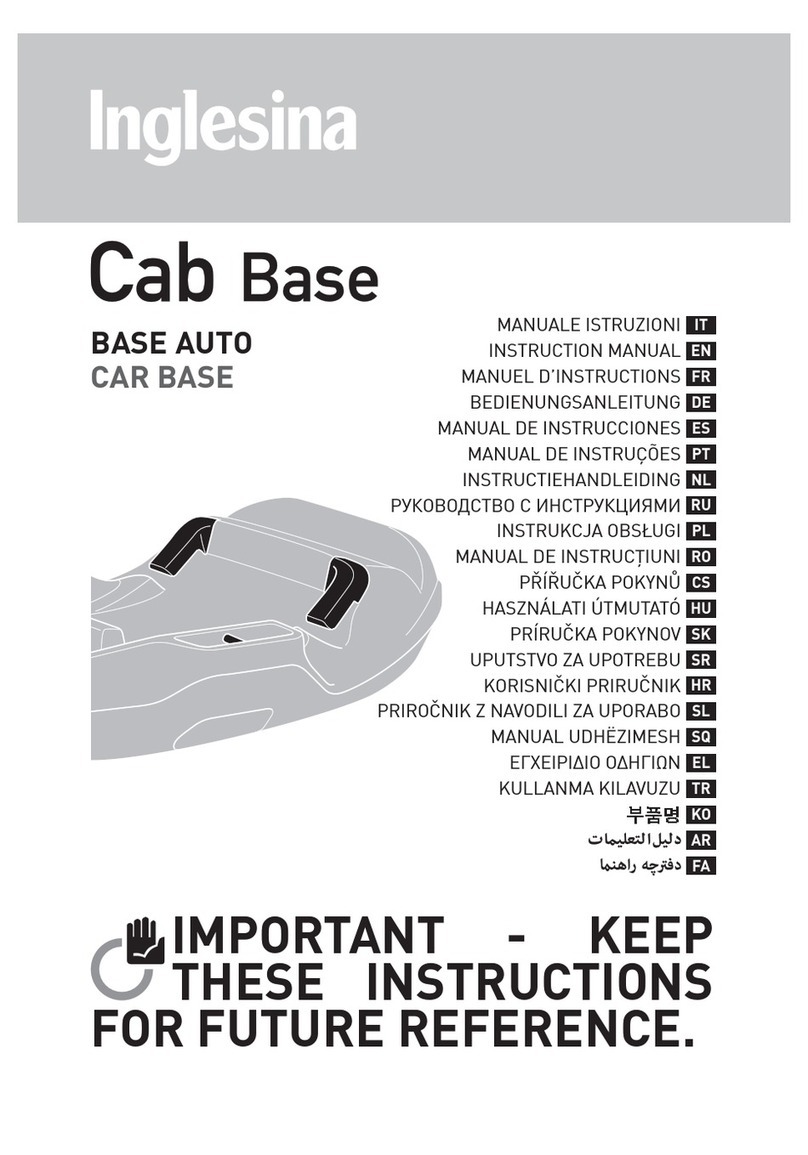
Inglesina
Inglesina Cab instruction manual
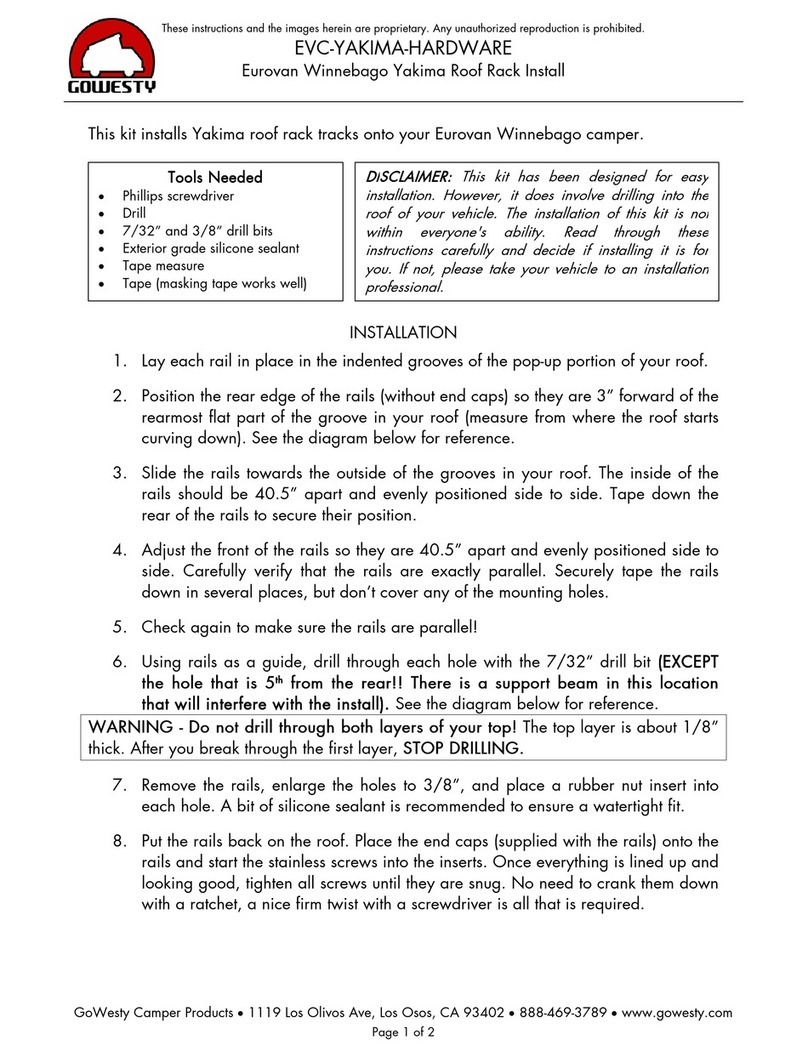
GOWESTY
GOWESTY Yakima installation instructions

Kemo Electronic
Kemo Electronic M180 quick start guide
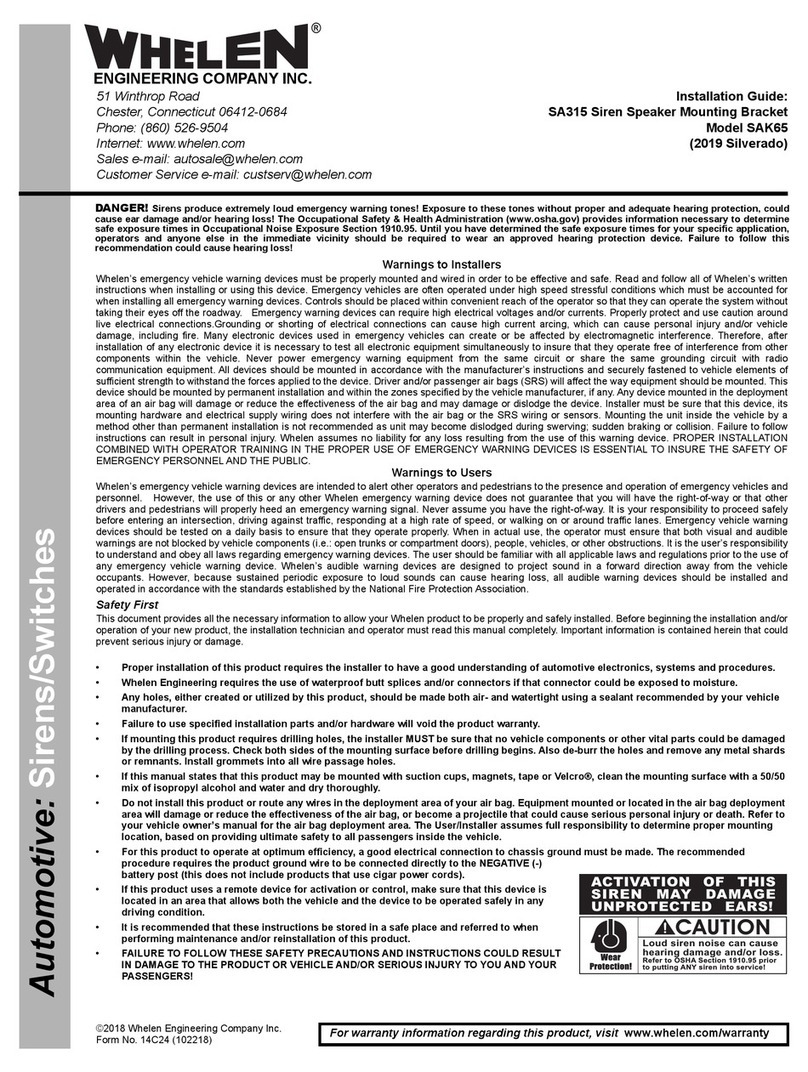
Whelen Engineering Company
Whelen Engineering Company SAK65 installation guide
